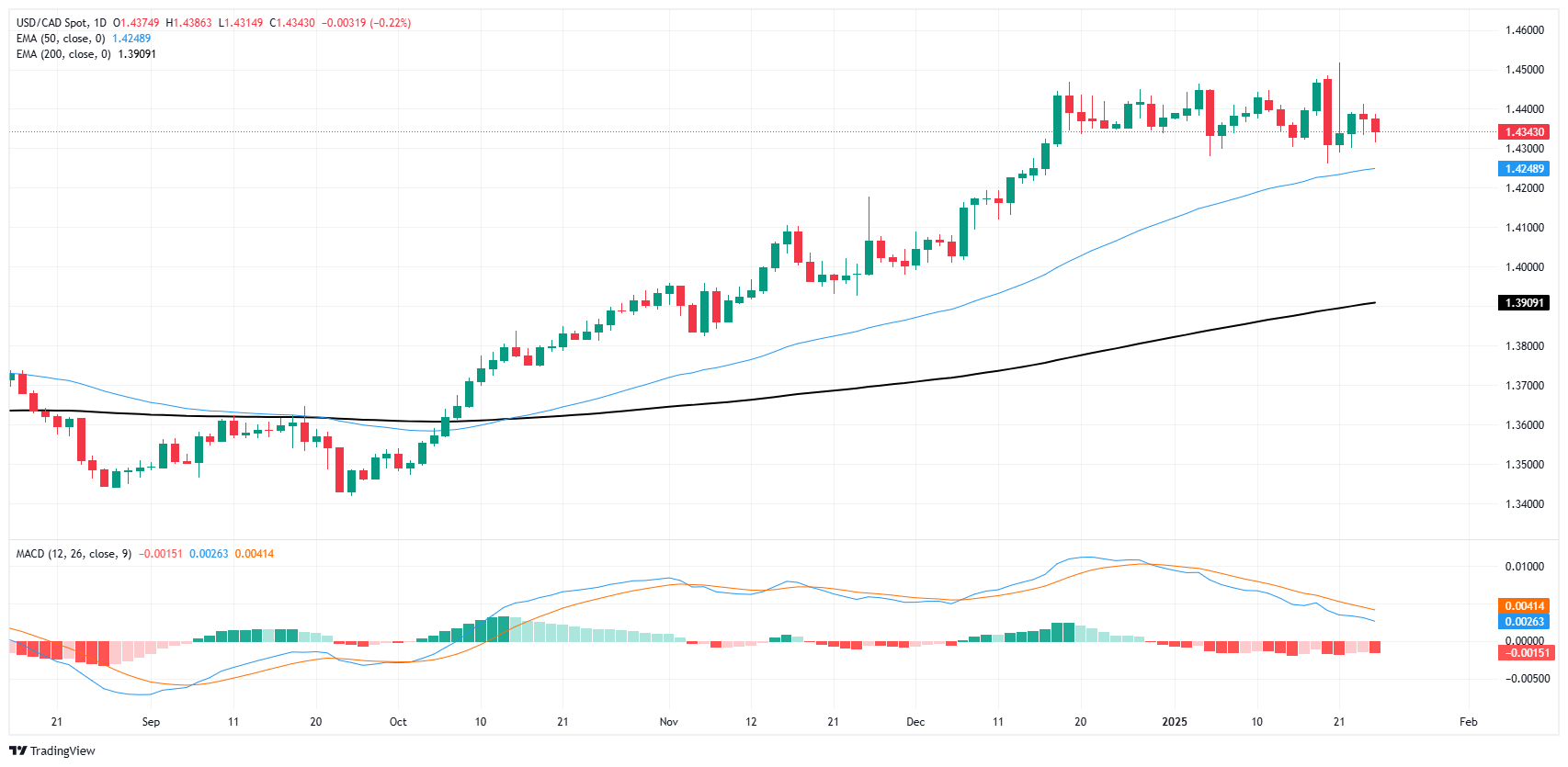提供最佳价差和条件
 了解更多
了解更多
The Canadian Dollar (CAD) gained around one-quarter of one percent against the Greenback on Friday, testing higher but still firmly entrenched in a consolidation pattern that kicked off in mid-December. The US Dollar is softening across the board to wrap up a largely unremarkable trading week, rather than the Loonie finding any intrinsic bidding pressure, implying that bullish momentum is unlikely to be sustained.
The Bank of Canada (BoC) is poised to deliver another quarter-point rate cut next week, while the Federal Reserve (Fed) is broadly anticipated to stand pat on interest rates through the first half of the year. With USD/CAD’s interest rate differential set to widen even further, it is unlikely that FX markets will find much reason to bid up the Loonie after both central banks make their rate call appearances, both scheduled for next Wednesday.
USD/CAD’s consolidation phase continues to grind sideways as Loonie traders struggle to push into either direction decisively. Price action remains constrained around the 1.4400 handle, though the CAD frequently tests into fresh multi-year lows.
The pair’s last bullish phase has truly run out of gas as the 50-day Exponential Moving Average (EMA) rises into 1.4250, but signs of a technical turnaround remain absent. Near-term bids remain constrained by a technical floor priced in at the 1.4300 handle.

The key factors driving the Canadian Dollar (CAD) are the level of interest rates set by the Bank of Canada (BoC), the price of Oil, Canada’s largest export, the health of its economy, inflation and the Trade Balance, which is the difference between the value of Canada’s exports versus its imports. Other factors include market sentiment – whether investors are taking on more risky assets (risk-on) or seeking safe-havens (risk-off) – with risk-on being CAD-positive. As its largest trading partner, the health of the US economy is also a key factor influencing the Canadian Dollar.
The Bank of Canada (BoC) has a significant influence on the Canadian Dollar by setting the level of interest rates that banks can lend to one another. This influences the level of interest rates for everyone. The main goal of the BoC is to maintain inflation at 1-3% by adjusting interest rates up or down. Relatively higher interest rates tend to be positive for the CAD. The Bank of Canada can also use quantitative easing and tightening to influence credit conditions, with the former CAD-negative and the latter CAD-positive.
The price of Oil is a key factor impacting the value of the Canadian Dollar. Petroleum is Canada’s biggest export, so Oil price tends to have an immediate impact on the CAD value. Generally, if Oil price rises CAD also goes up, as aggregate demand for the currency increases. The opposite is the case if the price of Oil falls. Higher Oil prices also tend to result in a greater likelihood of a positive Trade Balance, which is also supportive of the CAD.
While inflation had always traditionally been thought of as a negative factor for a currency since it lowers the value of money, the opposite has actually been the case in modern times with the relaxation of cross-border capital controls. Higher inflation tends to lead central banks to put up interest rates which attracts more capital inflows from global investors seeking a lucrative place to keep their money. This increases demand for the local currency, which in Canada’s case is the Canadian Dollar.
Macroeconomic data releases gauge the health of the economy and can have an impact on the Canadian Dollar. Indicators such as GDP, Manufacturing and Services PMIs, employment, and consumer sentiment surveys can all influence the direction of the CAD. A strong economy is good for the Canadian Dollar. Not only does it attract more foreign investment but it may encourage the Bank of Canada to put up interest rates, leading to a stronger currency. If economic data is weak, however, the CAD is likely to fall.